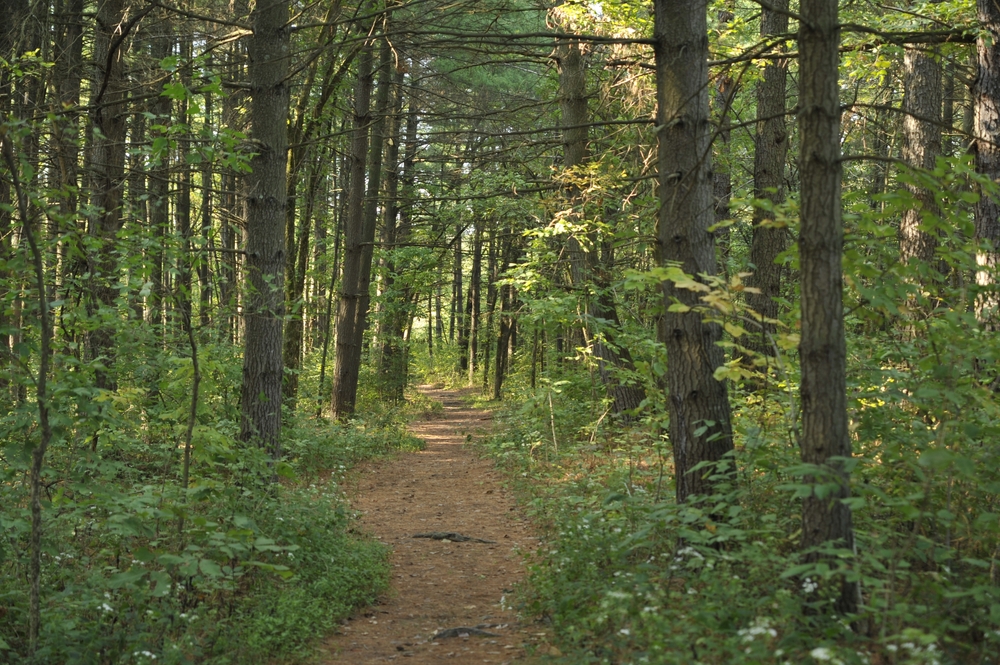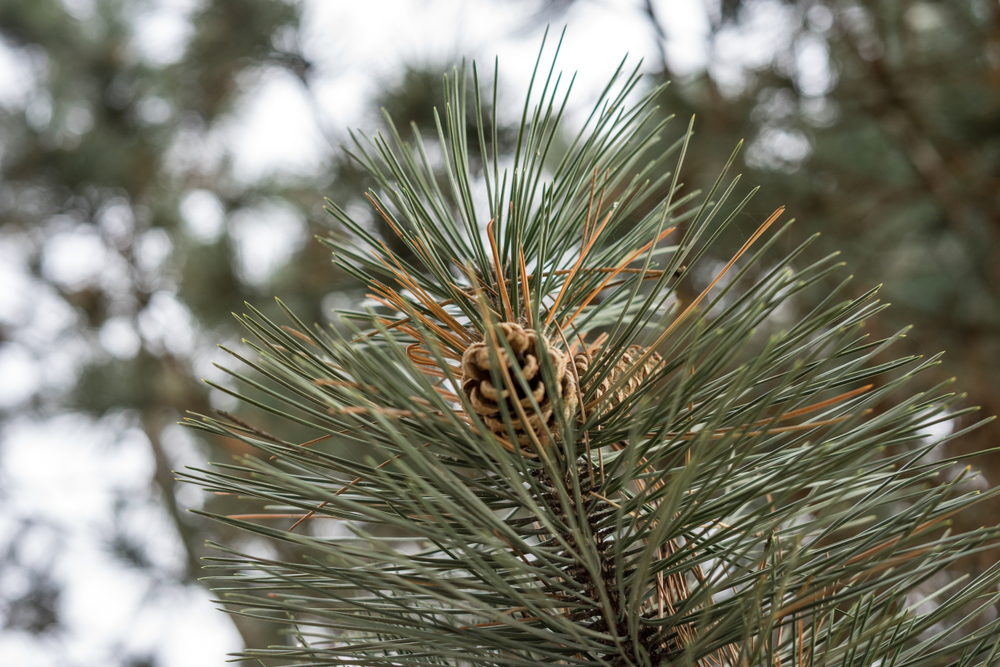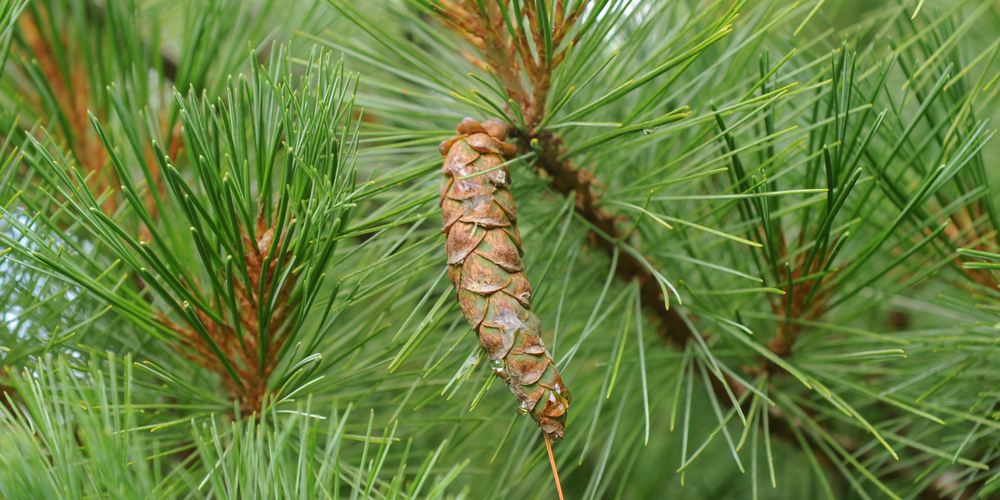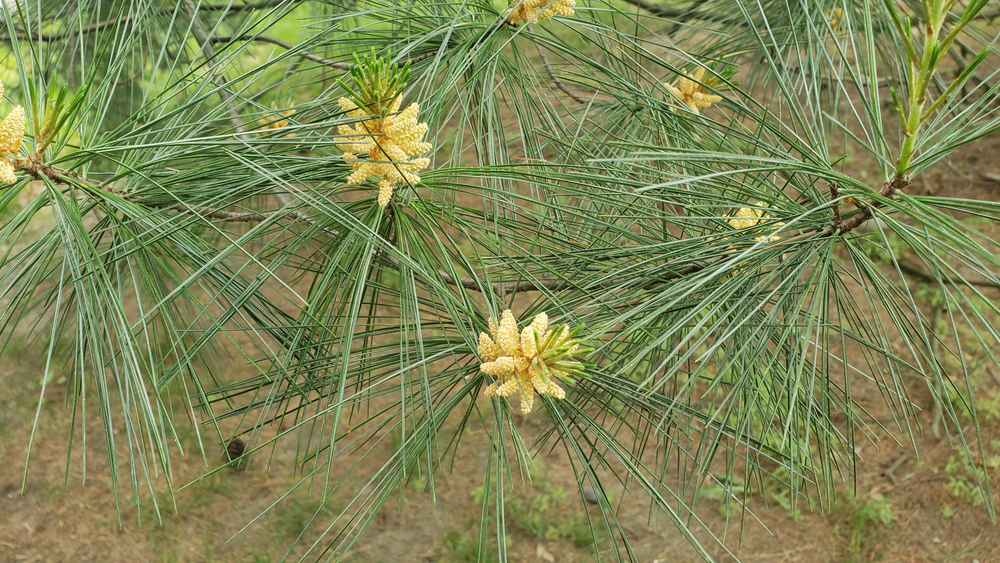A Pine tree is a conifer tree in the genus Pinus. Conifer trees can also be thought of as “cone-bearing” trees. And to date, there is only one known extant class among the Coniferae, referred to as Pinopsida. Within this classification, all identified plants are woody perennials with secondary growth.
Pine trees are common throughout North America. According to The World Flora Guide, created through the collaborative efforts of the Royal Botanical Gardens and Kew Missouri Botanical Gardens, there are 187 species of pine.
Pine Trees Native to Ohio
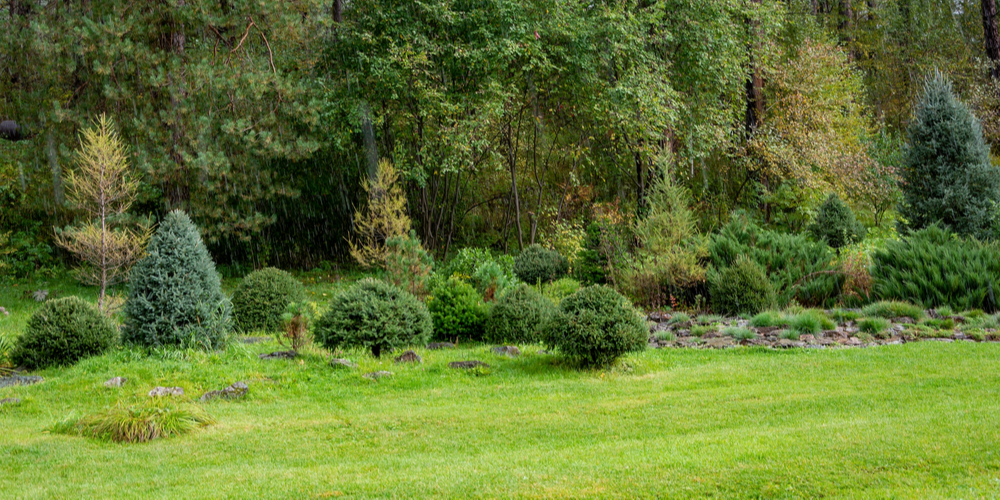
Ohio is a part of the Midwestern region of the United States. It has a humid continental climate, characterized by hot, moist summers and winters ranging from cool to cold. Pines are hardy and environmentally versatile. And can be found from semi-arid zones to the boreal forests of the North.
Ohio, at the heart of the United States, is only home to four species of pine indigenous to its soil. Though others may have crept in, Ohio is only home to four out of the total known 187 pine species. They are:
- P. echinata
- P. rigida
- P. strobus
- P. virginiana
P. echinata
Colloquially called the “Shortleaf Pine,” this tree can be found throughout the Southeastern United States, as well as in Southern Ohio. P. echinata is quite a large specimen, towering at heights of up to 100 feet. The curve of its form can take on a variety of shapes, so do not expect predictability with the Shortleaf. Its trunk may be straight or crooked, and almost always it grows with an irregular crown. Its foliage is clustered together in needle-like balls.
This, of course, is par for the course with pine trees. Its cones are soft with scales like that of a fish. An interesting tidbit about the Shortleaf Pine is that it begins developing a J-shaped crook as a seedling. In the event its upper trunk falls prey to some hazard and is killed, the tree can continue to thrive. Talk about resilience!
P. rigida
Called the “Pitch Pine,” P. rigida is typically smaller than the previously-mentioned P. echinata and is at home in the Eastern United States. Its range spans from central Maine to Georgia. And it ventures no further west than the southernmost region of Ohio. Though not typically characteristic of Canada, there are two varieties of Pitch Pine along the St. Lawrence River in Quebec and Ontario.
According to many biologists, the Pitch Pine can be counted as a “pioneer species,” given that it is often one of the first species to repopulate an area divested of vegetation. The tallest members of P. rigida can grow to roughly 98 feet. But on average, it is below 50 feet tall. And it is not uncommon to see Pitch Pine smaller than that in residential areas of Southern Ohio used as security trees.
P. strobus
Its common name is the Eastern White Pine (among others), and it is in the Nearctic temperate broadleaf and mixed forests biome that the northeastern United States contains. P. strobus is robust in dry, sandy soils and thrives in the highlands. But can sometimes be found to grow in boggy areas such as northern Georgia.
Like the other pines thus mentioned, it has the potential to grow into quite a large specimen. Peaking at 100 feet would be appropriate for the Eastern White Pine. Interestingly, it is also named as one of the pine subspecies that can live well over 200 years! There are pine trees aplenty that predate the United States as a country.
P. virginiana
The Virginia Pine, Possum Pine, Scrub Pine, and Jersey Pine are all epithets belonging to P. virginiana. However, despite its somewhat misleading scientific nomenclature, it is also indigenous to Ohio. Like its relatives, it is a coniferous tree whose “leaves” grow in clustered needles of five, seldom less than that, and it bears cones every three to five years. Such is the growth pattern of pines native to the Buckeye State.
In Conclusion
If you are interested in planting pine trees, many options will thrive in Ohio. Refer to the pine trees listed above and start planning your landscaping ideas!
There are also many native and non native shrubs that will grow well in Ohio and look great in your yard.
